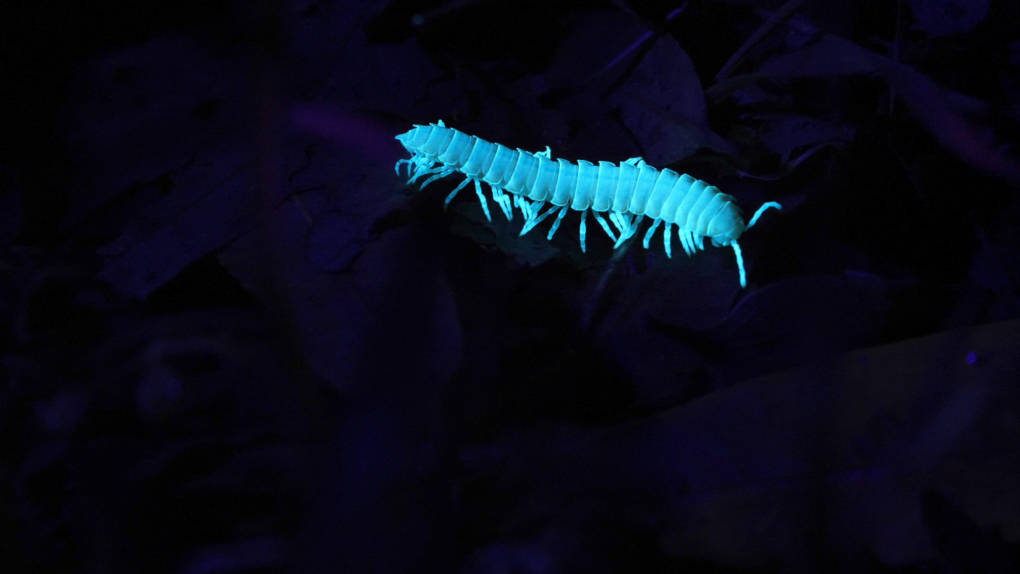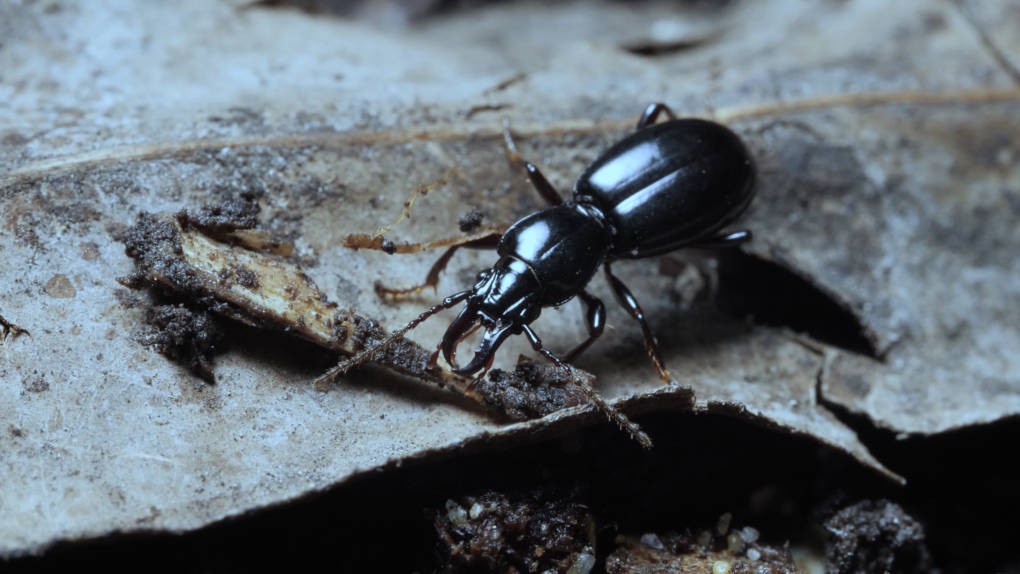This Millipede and Beetle Have a Toxic Relationship
Across Northern California, as the rainy season is ending and spring is taking hold, bees are buzzing, flowers are growing and hikers are hitting the trails.
But down at ground level, the pastoral scenery is concealing a surprising battle: relentless chemical warfare between bugs.
More than 200 millipede species emerge from their underground lairs every year during the winter and early spring months to forage for food and seek mates.
They have to fend off insects, mammals, reptiles and amphibians looking for a tasty meal. But they have a secret weapon — an array of toxic chemicals they shoot from special glands. One Bay Area species, Xystocheir dissecta, carries deadly cyanide and benzaldehyde.
If they’re feeling threatened, these millipedes produce an invisible, odorless hydrogen cyanide gas that they spray at predators, which is virtually toxic to all organisms. One byproduct is benzaldehyde, which gives off the scent of bitter almonds, as an additional signal that they’re secreting poison.

The millipedes don’t poison themselves, however. They’ve developed an immunity.
The cyanide can kill nearly any other animal trying to dine on the millipedes. Except one.
New research has found that one tough beetle is the only known predator in the world that can survive a direct blast of cyanide gas and keep going.

Brandt Weary, an entomologist, studied these hardy beetles last year for his senior thesis at UC Berkeley. The beetles, known as Promecognathus crassus, love to eat millipedes, even though they are only one-fifth the millipedes’ size.
Weary wanted to know more about how the beetles withstood the millipedes’ tough chemical defense. He found that while many other beetles will avoid the cyanide-spraying millipedes, Promecognathus seeks them out.
“I’d actually put them in a dish together and watch them hunt,” he said. “The millipedes are spraying cyanide, and the beetles don’t seem to mind. Then I actually tested to see if the beetles can resist cyanide. It seems that they can. It’s very unusual in the animal kingdom.”
His advisor, Kip Will, an associate professor who oversaw Weary’s study, said researchers still aren’t entirely sure how the beetles can take a blast of cyanide that would kill many other insects.
“We knew that the beetles preferred millipedes and seemed to be quite evolved to eat them, but that implies some mechanism by which they overcome or bypass nasty cyanide,” he said.

When it attacks, the beetle clamps down on the millipede’s armor with its unusually long, scissors-like jaws and tries to decapitate it — eventually feeding on the insect from the inside to out.
“It was a little surreal to see behavior that I had only ever read in the literature,” Weary said. “At the time, their hunting behavior had never been caught on film and I had never observed it in the wild, so it felt like watching a rare nature documentary.”
Weary also ran lab tests that exposed other species of beetles to the chemicals. Not only did Promecognathus last the longest, it was the most tolerant of them all. They were even able to withstand cyanide levels that would knock down beetles 10 times their size.
Will said that Weary’s study is the first to do several things.
“These beetles don’t, or at least don’t need to, paralyze their prey as suggested by other research,” he said. “Other potential predators that might eat the millipedes actually don’t, and Promecognathus definitely does. And the beetle has a significantly greater tolerance — and perhaps a complete resistance — to cyanide.”
“We’re not sure of the biochemical way they do this yet,” Will said. “But whatever it is — an enzyme would be a good hypothesis — it is the first time that cyanide resistance has been shown to be in a predatory species.”
All other known research involved insects that fed only on plants that contain cyanide.
Weary plans to focus more of his future research on centipedes and millipedes, but he said he was enthralled by the tough little beetles.
“They have personalities. They’re different from each other, and they have their own little lives. It’s just really fascinating to watch them behave.”